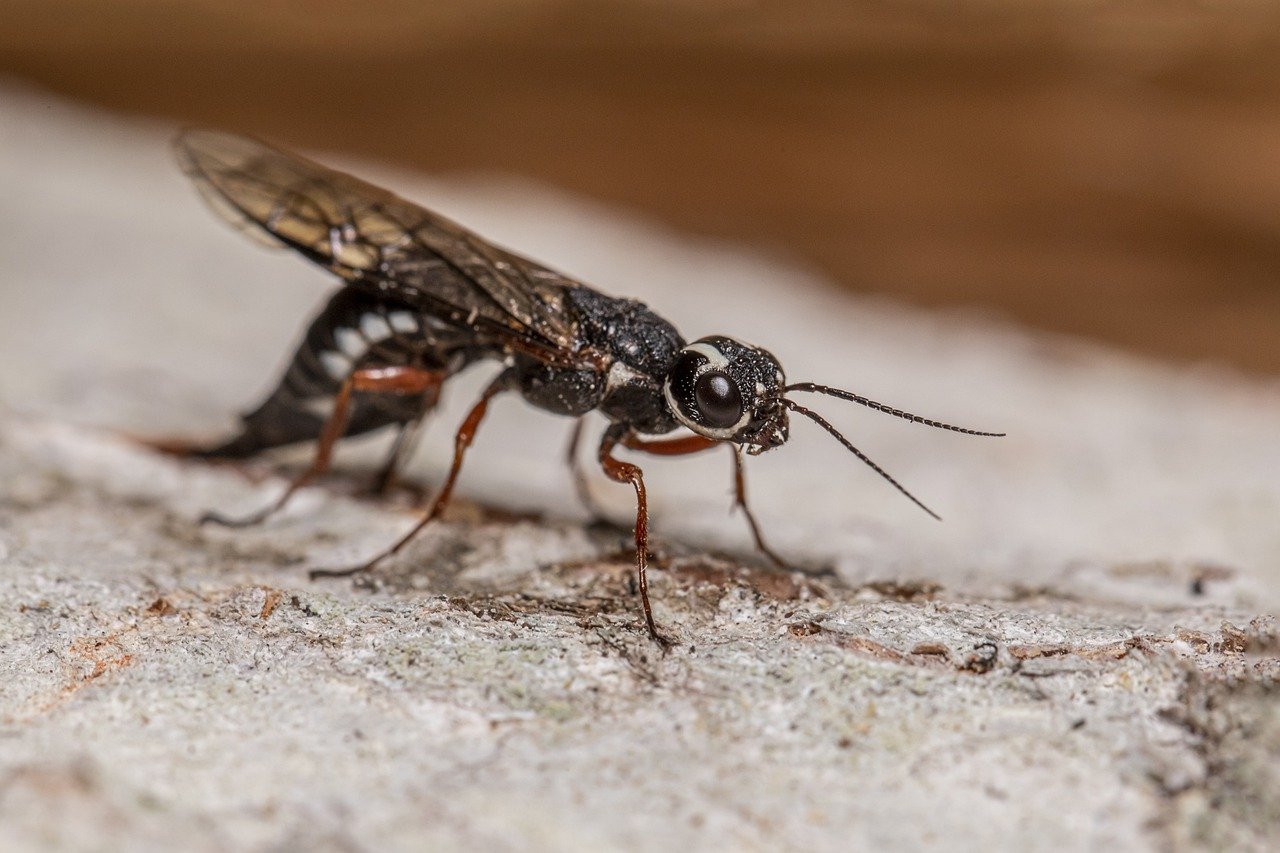The Ichneumon Wasp (Limonethe maurator) is a fascinating species belonging to the family Ichneumonidae, a large group of parasitoid wasps. Known for their slender bodies and long ovipositors, these wasps play a crucial role in controlling populations of other insects, particularly pests. Despite their intimidating appearance, ichneumon wasps are harmless to humans.
Physical Description
- Size:
- Body length: 10–25 mm, depending on the individual.
- Coloration:
- Generally dark brown or black with pale yellow markings on the body and legs.
- Wings are transparent with dark venation.
- Ovipositor:
- Females possess a long, needle-like ovipositor used for laying eggs inside or on host organisms.
- In Limonethe maurator, the ovipositor is particularly slender and slightly curved.
- Antennae:
- Long and threadlike, aiding in locating hosts.
Behavior
- Feeding:
- Adults feed on nectar, pollen, and occasionally honeydew from aphids.
- Larvae are parasitoids, feeding on the internal tissues of their host.
- Reproductive Strategy:
- Females use their ovipositors to inject eggs into the larvae or pupae of other insects, especially caterpillars and beetle grubs.
- The larvae develop inside the host, eventually killing it.
Habitat
- Found in a variety of environments, including:
- Forests and woodlands.
- Meadows and grasslands.
- Gardens and agricultural fields.
- Prefers areas with abundant host populations and flowering plants.
Life Cycle
- Egg Stage:
- Eggs are laid inside or on a host organism.
- Larval Stage:
- Larvae feed parasitically on the host’s internal tissues.
- Development is carefully timed to avoid killing the host too soon.
- Pupal Stage:
- After consuming the host, the larva pupates, often within or near the host’s remains.
- Adult Stage:
- Adults emerge from the pupae, ready to reproduce and continue the cycle.
Distribution
- Found across Europe, extending into parts of Asia.
- Common in temperate regions, especially where host insects are plentiful.
Ecological Role
- Biological Control:
- Acts as a natural pest control agent by targeting agricultural pests such as caterpillars and beetle larvae.
- Pollination:
- Adults contribute to pollination while feeding on nectar.
Conservation Status
- Not listed as threatened, but populations depend on the availability of suitable hosts and habitats.
- Habitat loss and pesticide use can negatively impact their numbers.
Interesting Facts
- Specialized Hosts: Many ichneumon wasps, including Limonethe maurator, have highly specific host preferences, targeting only certain species.
- Harmless to Humans: Despite their long ovipositors, these wasps do not sting humans and are entirely non-aggressive.
- Diverse Family: Ichneumonidae is one of the largest families of insects, with over 25,000 described species worldwide.
Summary
The Ichneumon Wasp (Limonethe maurator) is an intriguing and beneficial insect, playing a significant role in natural ecosystems by controlling pest populations. Its specialized behaviors and ecological importance highlight the delicate balance within the insect world and its interconnectedness with human agriculture and biodiversity.
Visited 1,039 times, 5 visit(s) today
Views: 1348
Subscribe to the newsletter:
